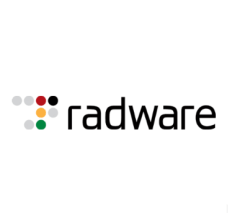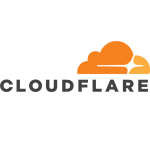What is our primary use case?
The solution is basically used for load balancing. We do build for load balancing as well. We have several load balancers in the physical and cloud space. We started using it for GTM and also use it for some iRules scripting and to modify the SDP draft.
How has it helped my organization?
It was way cheaper than F5, so that was the reason to move from F5 to Radware. In terms of value for money, maybe it's better. F5 is very good. However, it was really expensive. This solution is also quite good, yet costs much less.
What is most valuable?
It's quite a nice solution. It's like F5. They are very good products and are very easy to use. They're very powerful, you can do a lot of things with the scripting, and also even in the interface and the graphic interface, you can configure other things without going to the scripting, to the rules.
The initial setup is easy and it was quick to deploy.
The solution has been very stable.
What needs improvement?
Maybe there are a couple of things that didn't work very well. You kind of have the same build and different build for load balancers. It can create some issues. We faced issues where we needed to have some kind of the same balance in different environments. That happened with F5. However, in Radware, you can do it when we move to production and we need to change the balance there. Different environments should be able to have some balance to be completely isolated. That's something that they could really improve to make it really, really isolated.
We’d like the solution to include more security features in the standard license.
Buyer's Guide
Radware Alteon
September 2025
Learn what your peers think about Radware Alteon. Get advice and tips from experienced pros sharing their opinions. Updated: September 2025.
868,787 professionals have used our research since 2012.
For how long have I used the solution?
We just acquired Radware in the last few months. IT’s been about eight months.
What do I think about the stability of the solution?
The solution is stable. In the last eight months since we migrated, we’ve had no big issues. Everything is working fine. There are no bugs or glitches, and it doesn’t crash or freeze.
What do I think about the scalability of the solution?
The scalability is about licensing. You require more bandwidth and more throughput. To scale, it’s about acquiring more licensing. That’s about it.
For example, if you have a license of 30GBs of traffic and may need to support up to maybe 80GBs. You need to increase the license. You can kind of use it on demand, however. If you can change the license every three years, and you can see that your throughput is going to increase a lot, you can scale up.
We have about ten people on the solution currently. We do have plans to potentially increase usage in the future.
How are customer service and support?
Technical support was okay. We opened a couple of tickets, it was okay. They were fast and they fixed the issues.
How would you rate customer service and support?
Which solution did I use previously and why did I switch?
We just migrated to Radware from F5 APM. It’s quite new. It's really, really powerful. However, they are very good load balancers.
How was the initial setup?
The setup is relatively straightforward. To do clustering is very easy. It's way easier than F5, I would say.
The deployment was quite fast. The problem was that migrating from F5 took a lot because we had to add the Windows in place and handle the service impact. That said, deploying is fast. If you are in the integration field and you don't have to migrate, it's pretty fast.
How many people you need to maintain the solution depends on the size. However, you might need four or five people.
What about the implementation team?
There was a mix of personnel helping with the setup. I was doing it mostly myself. However, I had the help of professional services from Radware.
What was our ROI?
For the amount of traffic that we use, it's as good as F5 and way cheaper.
What's my experience with pricing, setup cost, and licensing?
The pricing is much more reasonable than, for example, F5, our old solution.
I’m not sure how much the solution costs. However, my understanding is that it is moderately priced. I’d rate it a three out of five in terms of affordability. It’s not cheaper. However, it is less expensive than F5.
Which other solutions did I evaluate?
We checked in with Citrix as well. It was also good. In the end, we went to Radware.
What other advice do I have?
We’re just a customer.
We’re using one of the most recent versions of the solution.
It's a very good product, however, if it would work for your company would depend on your needs. It depends on the amount of traffic.
I’d rate the solution an eight out of ten.
Disclosure: My company does not have a business relationship with this vendor other than being a customer.


















